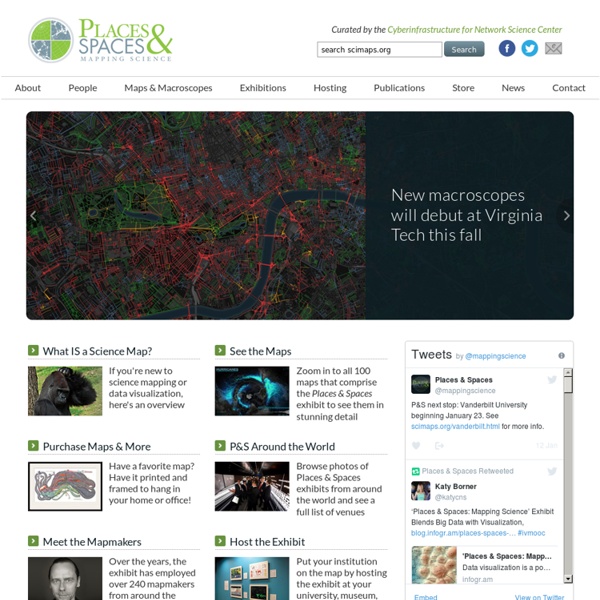



Mike Bostock Please find my recent work on Observable. Past Work April 28, 2017A Better Way to Code December 9, 2016Command-Line Cartography March 9, 2016What Makes Software Good? December 28, 2015Introducing d3-scale December 3, 2015Introducing d3-shape November 23, 2015Let’s Make a (D3) Plugin December 27, 2014Mapping Every Path to the N.F.L. December 20, 2014How Each Team Can Make the N.F.L. November 5, 2014The Most Detailed Maps You’ll See From the Midterm Elections November 3, 2014How To Scroll September 19, 2014‘Stop-and-Frisk’ Is All but Gone From New York July 26, 2014Mapping the Spread of Drought Across the U.S. June 26, 2014Visualizing Algorithms June 15, 2014Three Little Circles May 22, 2014Is It Better to Rent or Buy? May 6, 2014Let’s Make a Bubble Map April 22, 2014Who Will Win The Senate? March 7, 2014Let’s Make a Block Feburary 14, 2014Front Row to Fashion Week February 14, 2014Sochi 2014: Interactive Stories January 11, 2014Taking the Battle to the States November 5, 2013Let’s Make a Bar Chart #Examples
Photo to Cartoon METAgraphias Muitas vezes, para que uma iniciativa prossiga em suas intenções, palavras devem adquirir certas especificidades, o que implica na elaboração de sentidos (sensoriais e cognitivos). Estas supostas especificidades engendram a definição conceitual das próprias palavras a serem utilizadas, o que pode acontecer (e geralmente acontece) com outras palavras. Ou seja: as palavras, enquanto elementos estilísticos e discursivos, são metalinguísticas em si mesmas. No entanto, considerando que as visualidades compõem conteúdo fundante deste projeto editorial, cujo enfoque é a elaboração de conteúdos bibliográficos para formatos não-bibliomórficos, talvez seja sensato pleitear outras possibilidades de apresentação. Deste modo, conceitos e palavras também ganham espaço para que sejam apresentados como se fossem imagens. Assim, a relação entre palavras e visualidades não fica restrita à ilustração, à decoração cognitiva, ao supérfluo e desnecessário.
T N T — The Network Thinkers Plantes de février à mars Teneur moyenne en protéines de quelques végétaux sauvages en g/100g Ortie 8 et 40 sechée / faînes 22 / chénopode et bourse à pasteur 4.2 Teneur en glucide. Châtaignes 42 / glands de chênes 60 / mûres 14.Teneur en lipides Noisettes 62 / faînes 50 / glands 22 Teneur en vitamine c mg/100g Cynorrhodon 500-4000 / feuilles de violettes 210 / feuilles de fraisier 230. A titre d’exemple orange 50 mg Plantes de février mars. La doucette « ou Mâche sauvage »Un régal de salade Nombril de venus ( umbilicus rupestris ) Crassulacée vivace, charnue d’un vert vif, les feuilles sont comestibles crues, en mélange dans les salades ou en décoration, les feuilles après avoir retiré l’épiderme ont des propriétés vulnéraires. Egopode ( aegopodium podagraria ) Ombellifère vivace, très aromatique, à pétiole de section triangulaire, la plante est stimulante, diurétique, et vulnéraire, utilisation culinaire jeunes pousses en salade, ou cuites à l’eau comme des épinards, en gratin... L’ail des ours Le pissenlit Alliaire
Raphaël—JavaScript Library Portfolio numérique | Dossiers | Publications État de la question Le portfolio est un outil utilisé depuis longtemps par les artistes, qui s’en servent pour présenter leurs meilleures réalisations. En formation, son utilisation est plus récente. C’est avec l’arrivée des approches centrées sur l’apprenant, telle l’approche par compétences, qu’est apparu le besoin d’outils comme le portfolio, qui amènent l’étudiant à être actif et à s’impliquer dans sa démarche d’apprentissage, tout en recevant le soutien nécessaire de son enseignant. Porter un jugement Fournir une rétroaction appropriée pour aider l’étudiant dans la poursuite de ses apprentissages Donner une note équitable selon le niveau de maitrise de la compétence Ce dossier porte spécifiquement sur le portfolio numérique. Dans une première partie, ce dossier définit le concept du portfolio comme outil pédagogique, en aborde les buts et les utilités et précise les avantages du support numérique. 1. Un portfolio est beaucoup plus qu’un outil de collecte et d’archivage. 2. 3. 1. 2.
Gregor Aisch – driven by data Parametric Realizations Fall 2010 | Products that explore the relationship between parametric and physical models blprnt.blg | Jer Thorp Parametric The Three Elements of Successful Data Visualizations - Jim Stikeleather by Jim Stikeleather | 8:00 AM April 19, 2013 Now that we’ve discussed when data visualization works — and when it doesn’t, let’s delve into what makes a successful data visualization. Although there are a number of criteria, including ease of comprehension and aesthetics, I’d like to explore the three that designers most often overlook. 1. It understands the audience. Before you throw up (pun intended) data in your visualization, start with the goal, which is to convey great quantities of information in a format that is easily assimilated by the consumers of this information — decision-makers. Who is the audience, and how will it read and interpret the information? 2. Lines and bars are simple, schematic geometric figures that are an integral component of many kinds of visualizations: lines connect, suggesting a relationship. There is one other element to the framework: Before everything else, make sure your data is clean and you understand its nuances. 3.